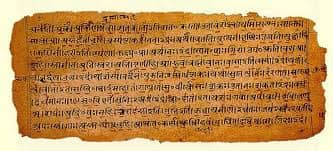4 Vedas in Hinduism- Rig-Veda, Yajur- Veda, Sama-Veda and Atharva-Veda
There are many ancient texts in Hinduism. But the Vedas in Hinduism has different place, it is considered as one of the oldest Hindu texts. The history of Vedas is ancient and were written around 2,500 years back. There is often a moot about Veda.
It was considered that there was only one Veda, the Yajur, but Yajur was later divided into four different Vedas. Rig-Veda is considered as one of the oldest Vedas of all time. In this article we will delve into various Vedas.
Another truth about Vedas in Hinduism is it is divided into two different parts, namely a Samhita and the Brahmanas. Mantras and incantations are included in the Samhita part. The incantations are mainly used for sacrifices. Nevertheless, these incantations are not a cup of tea to utter as well as interpret without the help of commentaries.
In such cases, Brahmanas are of great help. They are the ones who could explain the hymns. Brahmanas can delinate the descriptions of sacrifices and the procedure to be conducted. Likewise, they know how to conduct the Samhita.
Karma Kanda is referred to the Samhita and the Brahmanas. Therese parts are dealt as the rituals.
The Rig-Veda
The most significant and, as per researchers, most seasoned of the Vedas. It is partitioned into ten books (called mandalas) and has 1028 psalms in the commendation of different gods. These incorporate Indra, Agni, Vishnu, Rudra, Varuna, and other early or “Vedic divine beings.” It likewise contains the popular Gayatri mantra and the supplication called the Purusha Shukta (the tale of Primal Man).
The Yajur-Veda
A holy handbook for use in the presentation of yajnas (penances) It is separated into two areas, the prior “dark” and the later “white.” The Yajur Veda is also called the book of the rituals. Yajur Veda was the chief book to guide the priest and the Purohits in the Hindu religion who used to execute the religious and ceremonial activities.
Sama-Veda
Sama Vedas in Hinduism comprises of serenades and tunes to be sung during love and the exhibition of yajna. Sama Veda is also called the Book of Songs. The derivation of Sama Veda is from two words, Sama means Song and Veda refers to the knowledge. Sama Veda is considered as the roots for the classical Indian music and the old tradition of dances. Likewise, the tradition of dance is itself the archaic in the whole world.
Atharva-Veda
Atharva-Veda is yet another Vedas in Hinduism which containssongs, mantras and chants, generally outside the extent of yajna.
Inside every one of the four books there are four sorts of organization, or divisions, as demonstrated as follows. In the tightest of faculties, just the Samhitas contain the genuine Vedas. The initial two divisions identify with the exhibition of conciliatory customs (the karma-kanda area), while the subsequent pair comprises of theory (and have a place with the jnana-kanda segment).
- The Samhitas – in a real sense “assortments,” for this situation of psalms and mantras. They structure the Veda appropriate.
- The Brahmanas – exposition manuals of custom and supplication for the directing ministers. They will in general clarify the Samhitas. They additionally contain early forms of certain accounts.
- The Aranyakas – in a real sense “timberland books” for loners and holy people. They are philosophical compositions.
- The Upanishads – books of theory, likewise called “Vedanta,” the end or finish of the Vedas.
There are likewise two significant collections of advantageous writing, related near the Vedas themselves. They are:
- The Vedangas, which elucidate the sciences needed to comprehend and apply the Vedas.
- The Upavedas (generally considered smriti) which manage the four conventional expressions and sciences.
- Kalpa (custom detail)
- Siksha (elocution)
- Vyakarana (syntax)
- Nirukti (historical underpinnings)
- Chandas (meter)
- Jyotisha (cosmology/crystal gazing)
